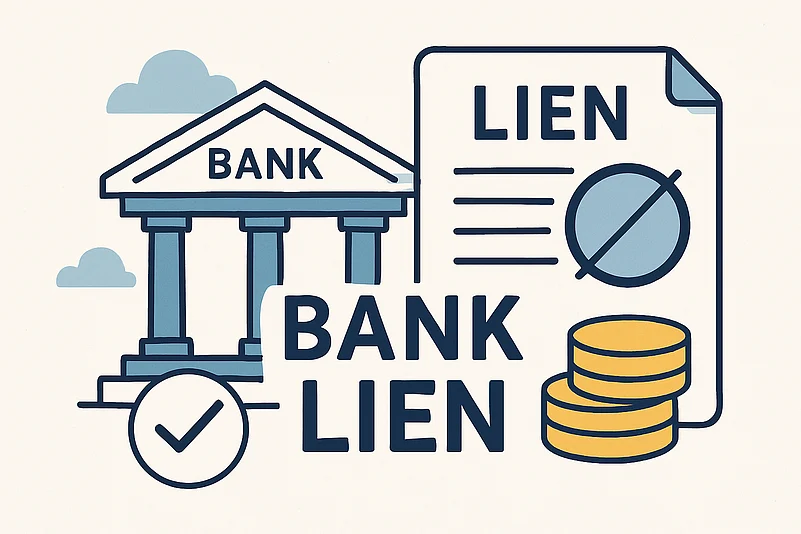
Summary of this article
Bank freezes the amount due in the account by putting a lien
Clear outstanding dues and request the bank to remove lien
Monitor dues regularly to avoid this in future
A lien on your bank account simply means that a specific amount is frozen and can only be withdrawn after the underlying cause of the seizure has been sorted out. A lien is marked by the bank when it has a legal right to recover dues or when there’s an instruction from authorities such as the Income Tax Department or a court to freeze the amount.
Unlike a regular debit freeze, a lien does not block the entire account or the total amount available, but blocks an amount equivalent to what is due or disputed. For instance, if your account has Rs 50,000 and the bank marks a lien of Rs 10,000 in it, the remaining Rs 40,000 can be used without any problem. The locked amount stays frozen until the matter is settled.
Why Banks Mark A Lien
There could be a number of reasons for which banks put a lien on your account. One reason could be due to non-payment of dues against a loan, missed equated monthly instalments (EMIs), credit card bill due, or unpaid taxes. Sometimes, if you have given a standing instruction for a fixed deposit as security for a credit card or loan, the bank can mark a lien against that amount until repayment is complete.
A lien can also be placed when instructed by the authorities. For instance, in the case of a tax demand or a court order, the bank can block part of your money to satisfy such requirements. Even technical problems, such as a failed transaction, create temporary liens until the bank verifies whether or not the payment went through.
How To Identify A Lien On Your Account
You can usually see this when you log in to your Netbanking or check your passbook or statement. The entry will say, “Lien Marked” or “Amount Under Lien”. If you are unable to withdraw money despite sufficient balance, that could also signal a lien.
If a lien is imposed, the banks are obligated to inform the accountholder by way of an email, SMS, or even a written notice, especially before making any adjustment using the available fund towards dues clearance. You should immediately get in touch with your bank if there is an entry for a lien that is unexpected.
How To Remove a Lien
The removal of the lien depends on the reason for which it was imposed. If the lien is because of unpaid dues, such as three consecutive missed EMI or credit card bill, the simplest way to remove it is by clearing the pending dues. Once you have made the payment, you can get in touch with your bank to remove the lien. It usually takes one-two working days for the update to reflect.
If the lien is placed on a fixed deposit linked to a credit card or an overdraft facility, then it is considered to be removed automatically once the outstanding balance is cleared or on the responsible closing of such an account. In the case of liens marked for governmental or court orders, you would have to provide proof that the issue has been resolved. For a tax recovery lien, you can provide an acknowledgment from the Income Tax Department for removal of the lien.
First, you should file a complaint with the grievance redressal system of the bank if the lien has been marked by mistake or due to some technical error. You can also approach the Banking Ombudsman if the issue is not resolved within 30 days.
How To Avoid Lien in Future
The easiest way of keeping a lien away is by monitoring your dues. Never delay your EMI and credit card bills and standing instructions. Likewise, always keep enough balance in your account well in advance to avoid any auto-debit problems. Also, never ignore any official notice or communication regarding tax obligations. Also, check your bank statement periodically so that you can identify any strange entries well in advance.










